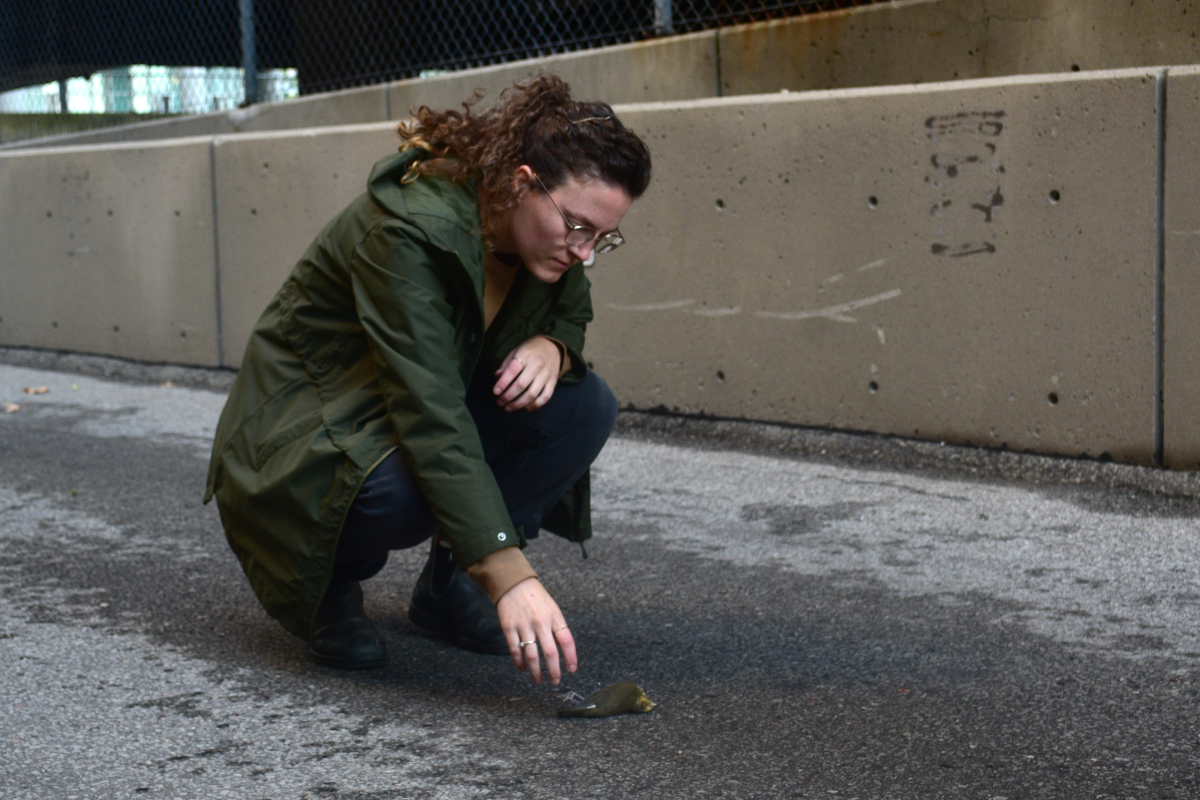Support strong Canadian climate journalism for 2025
On one particularly bad patrol day, Kaitlin Brough collected 30 birds that were stunned, dead or injured after hitting Scarborough building windows. She watched them strike feeling like she couldn’t get to them fast enough, said the 27-year-old Global Bird Rescue co-ordinator at Fatal Light Awareness Program (FLAP).
Brough started out as a volunteer with FLAP and is now co-ordinating her fourth Global Bird Rescue, raising awareness about collisions and organizing people to get outside to look for fallen birds.
Watching birds collide is heartbreaking, said Brough, recalling the first bird she ever saved. “You’re sitting there witnessing it happen and a lot of people don’t know what to do. When you are interacting with an injured bird, it helps people understand how bad it is.”
“People don’t really understand the magnitude of the issue, she said. The estimate for the number of birds killed after colliding with windows in Canada annually is 25 million, she added.

Taking place from Oct. 3 to 9 globally, FLAP times its biggest event of the year to mesh with fall migration when more birds will be in the sky, increasing their chances of colliding with windows.
Brough says birds provide so much ecologically. “Bird watching alone, taking care of the mosquito and insect populations, pollinating — if we lose that, it’s going to be quite a big issue.”
During Global Bird Rescue, people enter any birds they have found on the global bird collision mapper, an online map that keeps track of all collisions.
“Ideally, we want people to be out there to find the injured birds so we can get them to a rehab facility to get them treated and released again,” she said. “A lot of birds, even if they don’t die right away, can still succumb to their injuries.”
Keeping track of the data allows FLAP to home in on the hot spots and buildings that are particularly bad. “When you have the concrete data that you can pull from the mapper, you can go to building owners and say, ‘Look this is exactly what is happening at your building, these are the amount of species at risk we have collected that your building has killed.’ It’s a great way of persuading them to do something about it,” Brough said.
The data can also help government get involved with building owners that may not be interested in retrofitting their glass, especially if species at risk are involved, she explained.

Ongoing assessments and data collection are pushing for multiple buildings around the GTA to retrofit their windows. The TD Centre downtown has also been retrofitted, which was a “big one,” Brough said.
To get involved, Brough said joining Global Bird Rescue is a good introduction to the issue. “Going out to look for birds, making your own home windows bird-safe, and spreading the word to workplaces and local government officials about supporting bird-safe legislation are all incredible small things people can be doing that can make a big change.”
Windows on small buildings like homes, cottages and lower-storey houses make up most of the 25 million bird deaths per year in Canada, Brough said.
“The main goal this week is to get people out there looking for birds.”
Nairah Ahmed / Local Journalism Initiative / Canada's National Observer






Comments
FLAP is an outstanding charity and work group.
I've learned SO much over the years about avoiding bird strikes in our own home. Having tried everything out there--transparent spider stickers, dangling CDs, and so on, I can now rely on FLAP for sound, research-informed guidance on what REALLY works, for private citizens.
So cheap and so easy.
These bird strikes are completely avoidable, with a little time and tiny investment.
I moved from Ottawa to NE Ontario, to a very rural highway community, 35 years ago. My husband and I used to walk the highway when the weather was good, because the bush, the wilderness, around here is glorious. During migration times, we would find dead song-birds along our path--vehicle strikes. It was heart-breaking to see these little gems, just living their lives, dead. Because of vehicles.
Then we had a couple of bird-strikes on our windows, facing the highway, and I started my journey to find a way to stop that. Which continues.
As does the number of songbirds we see now, in comparison to what we saw when we first moved here. There's been a palpable and significant decline--again, heart-breaking.
I've made a nuisance of myself with friends and neighbours, letting them know about FLAP, and the dirt-easy way to keep birds from colliding with one's windows--and surviving. I don't know how much influence it's had, but I keep pushing.
The incredible beauty and joy that these little creatures bring into our world and our lives....we used to sit out on the deck during migration times especially, he with the binoculars and me with the bird guide, and watch, and identify, and record all the birds we saw. I can't think of a more restful, or a more soul-restoring, joyful way to spend an afternoon or a morning.
PLEASE support FLAP and it's activities. And PLEASE, follow their recommendations about windows in your own dwelling, and any and every other one that you have influence over.